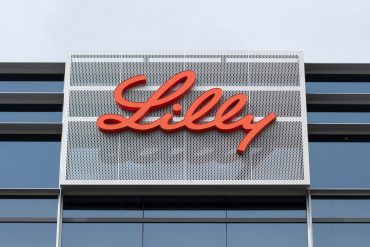
- Health Tech
Meta Partners with Oakley to Launch Sports-Focused Smart Glasses
5 minute read

Meta smart glasses expansion taps Oakley’s sports market dominance to accelerate mainstream wearable tech adoption
Key Facts
- Ray-Ban Meta sales exceed 2 million units since launch two years ago, establishing commercial viability for Meta’s smart glasses platform
- EssilorLuxottica targets 10 million units annually by end-2026, representing five-fold production increase from current capacity
- Oakley Meta glasses launch this week with sports-focused features including centered camera design and athletic activity optimization
Introduction
Meta expands its smart glasses portfolio this week with Oakley-branded models targeting athletes and outdoor enthusiasts. The launch marks Meta’s push beyond fashion-focused Ray-Ban partnerships into specialized sporting applications.
Company executives confirmed the release through social media channels, with Meta CTO Andrew Bosworth posting brand merger graphics. The move leverages Oakley’s established presence in sports eyewear to capture new market segments.
Key Developments
Meta’s partnership with EssilorLuxottica now extends through 2030, building on success from Ray-Ban collaborations. The French-Italian eyewear giant owns both Ray-Ban and Oakley brands, facilitating cross-brand technology sharing.
Oakley Meta glasses feature centrally-positioned cameras, departing from Ray-Ban models’ temple-mounted design. The frames reportedly use Oakley Sphaera styling, optimized for athletic activities including running and cycling.
Instagram teasers display merged brand logos with messaging about collaborative innovation. According to ZDNet, the announcement timing aligns with Friday social media campaigns.
Technical specifications mirror existing Ray-Ban models, incorporating 12-megapixel cameras and 1080p video recording. The glasses integrate Meta’s AI assistant for voice commands and real-time contextual assistance.
Market Impact
Smart glasses represent Meta’s fastest-growing hardware segment, with Ray-Ban models achieving mainstream adoption. The success validates consumer appetite for AI-powered wearables beyond smartphones.
EssilorLuxottica’s production expansion signals substantial market confidence. The company’s target of 10 million annual units by 2026 requires significant manufacturing investment and supply chain scaling.
Competitive pressure intensifies as Google and Apple develop rival products. Meta’s sports focus through Oakley creates differentiation ahead of broader market entry by tech giants.
Pricing strategies remain crucial, with current Ray-Ban models selling between $240-$300. Premium “Hypernova” variants with built-in displays target $1,000 price points, approaching traditional smartwatch territory.
Strategic Insights
Meta positions smart glasses as the next major computing platform beyond mobile devices. CEO Mark Zuckerberg emphasizes making advanced technology “fashionable,” addressing previous adoption barriers.
The athletic focus addresses specific use cases where hands-free operation provides clear advantages. Sports applications justify premium pricing through performance enhancement rather than novelty features.
EssilorLuxottica’s multi-brand strategy reduces Meta’s dependence on single partnerships. The company owns Persol, Oliver Peoples, and retail chains including LensCrafters, providing distribution advantages.
AI integration differentiates Meta’s approach from basic recording devices. Real-time translation, contextual assistance, and voice control create functional value beyond camera capabilities.
This foundation supports Meta’s broader wearables strategy encompassing camera-equipped earbuds and smartwatches. The company builds ecosystem lock-in through interconnected AI-powered devices.
Expert Opinions and Data
Industry analysts view the Oakley partnership as strategic market segmentation. “Athletes represent early adopters willing to pay premiums for performance benefits,” notes technology research firm data.
Meta’s hardware revenue growth reflects successful diversification beyond social media advertising. The company invests heavily in Reality Labs division despite ongoing losses exceeding $13 billion annually.
Manufacturing partnerships with established eyewear companies provide credibility and distribution networks. EssilorLuxottica’s global reach encompasses 150,000 retail locations across multiple continents.
Third-generation Meta glasses incorporating displays arrive later this year, potentially at Meta Connect conference. The roadmap suggests rapid iteration cycles matching smartphone development patterns.
Conclusion
Meta’s Oakley collaboration extends smart glasses beyond early adopter segments into mainstream athletic markets. The partnership leverages proven Ray-Ban success while targeting specific performance use cases.
Production scaling to 10 million units annually demonstrates serious commercial commitment from both companies. Smart glasses evolution continues toward becoming the next major consumer technology platform.








